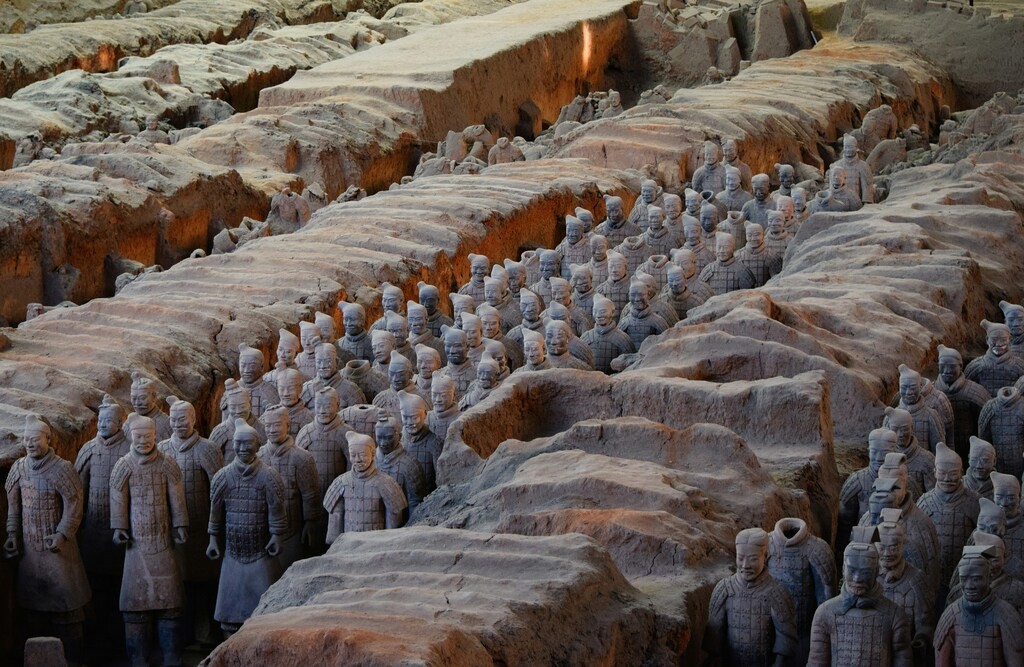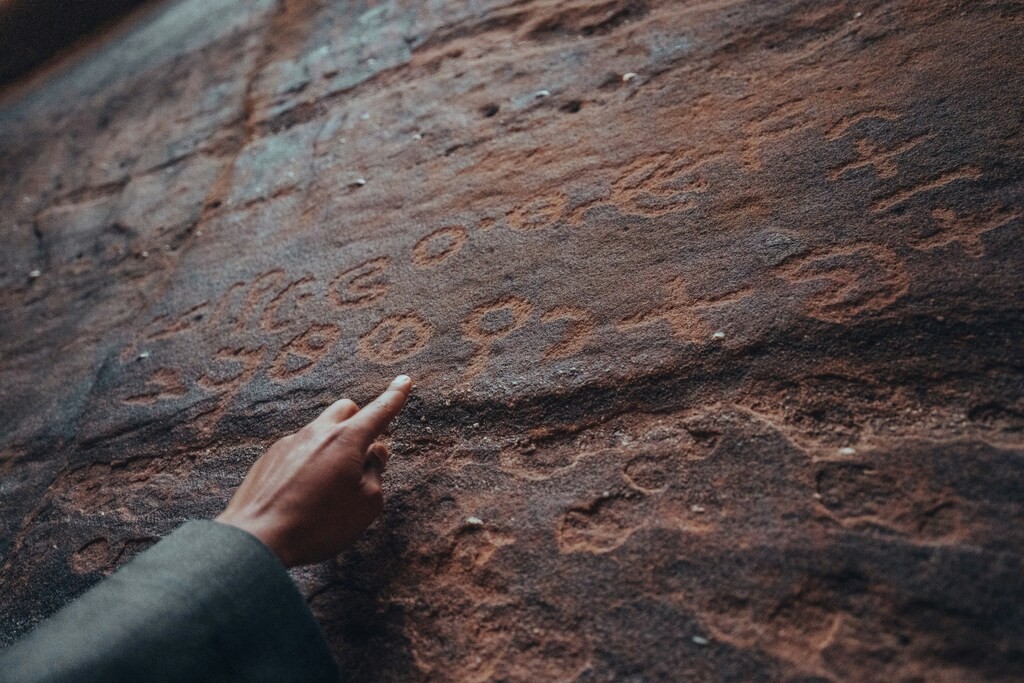In recent years, there has been a significant advancement in the field of Artificial Intelligence (AI) and Augmented Reality (AR). These technologies have become increasingly popular and have the potential to enhance virtual experiences in various fields such as gaming, education, healthcare, and...
AI Empowers Archaeologists to Rebuild Lost Ancient Cities

The fusion of artificial intelligence and archaeology is transforming our understanding of ancient civilizations. Gone are the days when archaeologists had to rely solely on manual excavation and rudimentary tools to piece together the past. Today, cutting-edge AI technologies are enabling researchers to digitally reconstruct ancient cities with remarkable precision and detail.
By leveraging AI-driven analysis of satellite imagery, ground-penetrating radar data, and even ancient texts, archaeologists can now uncover the hidden structures and layouts of long-lost urban landscapes. These advanced techniques not only save time and resources but also minimize the risk of damaging fragile archaeological sites. As a result, we are gaining unprecedented insights into the social, economic, and cultural dynamics of ancient societies.
Moreover, AI's ability to process and interpret vast amounts of data allows for the identification of patterns and anomalies that might have been overlooked by human researchers. This capability is particularly invaluable in the study of large, complex sites where traditional methods might fall short. With the help of AI, archaeologists are not only preserving history but also rewriting it, providing a clearer, more comprehensive picture of our shared human heritage.
Artificial Intelligence Transforms Archaeological Research
In recent years, artificial intelligence (AI) has revolutionized numerous fields, and archaeology is no exception. The integration of AI technologies into archaeological research is transforming the way archaeologists discover, analyze, and interpret ancient civilizations. By leveraging AI, researchers can now process vast amounts of data, uncover hidden patterns, and reconstruct ancient cities with unprecedented accuracy.
Data Analysis and Pattern Recognition
One of the primary ways AI is impacting archaeology is through advanced data analysis and pattern recognition. Traditional archaeological methods often involve labor-intensive excavation and manual data collection, which can be time-consuming and prone to human error. AI algorithms, however, can analyze large datasets quickly and efficiently, identifying patterns and anomalies that might be missed by the human eye. For instance, machine learning models can be trained to recognize specific architectural features or material compositions, allowing for more precise identification and classification of artifacts and structures.
Reconstructing Ancient Cities
AI-powered tools are also playing a crucial role in the reconstruction of ancient cities. Through the use of techniques such as photogrammetry and 3D modeling, AI can help create detailed digital reconstructions of historical sites. These reconstructions are not only valuable for academic research but also for public education and heritage preservation. By analyzing satellite images, ground-penetrating radar data, and other sources, AI can generate accurate representations of what ancient cities might have looked like, offering new insights into historical urban planning and architectural styles.
Moreover, AI can assist in predicting the locations of undiscovered archaeological sites. Predictive modeling, which uses historical data to forecast where future finds might be located, can guide archaeologists in their fieldwork, increasing the chances of successful excavations. This capability is particularly beneficial in regions where access is difficult or where traditional methods have proven ineffective.
Overall, the application of artificial intelligence in archaeology is opening up new avenues for discovery and understanding. As AI technology continues to evolve, its contributions to archaeological research are likely to expand, offering even more sophisticated tools for exploring the remnants of our ancient past.
Reconstructing Ancient Architecture with AI
The integration of artificial intelligence into the field of archaeology has revolutionized the way researchers approach the reconstruction of ancient architecture. With the help of advanced algorithms and machine learning techniques, archaeologists are now able to create detailed and accurate models of long-lost structures, providing valuable insights into the architectural marvels of past civilizations.
Advanced Algorithms and Machine Learning
AI technologies employ advanced algorithms to analyze vast amounts of archaeological data, including satellite images, ground-penetrating radar scans, and historical records. By processing this data, machine learning models can identify patterns and predict the most likely architectural features of ancient buildings. This not only speeds up the reconstruction process but also enhances the precision and accuracy of the models.
One of the key benefits of using AI is its ability to handle incomplete data. Traditional methods often struggle when faced with fragmented or partially destroyed structures. However, AI can infer missing information by comparing it to similar architectural styles and structures from the same period, allowing for a more comprehensive reconstruction.
Virtual Reconstruction and Visualization
AI-powered tools enable the creation of virtual reconstructions of ancient sites, offering a detailed visualization of what these structures might have looked like in their prime. These virtual models can be explored in 3D, providing both researchers and the public with an immersive experience of ancient architecture. This not only aids in academic research but also enhances educational outreach and cultural preservation efforts.
Moreover, the use of AI in virtual reality (VR) and augmented reality (AR) applications allows users to experience reconstructed sites in a highly interactive and engaging manner. By integrating AI-generated reconstructions with VR and AR, users can walk through ancient cities, explore intricate details of buildings, and gain a deeper understanding of historical contexts and architectural advancements.
In conclusion, the application of artificial intelligence in the reconstruction of ancient architecture is transforming archaeology. By leveraging the power of AI, researchers can overcome the limitations of traditional methods, providing more accurate and detailed reconstructions of ancient structures, and thus, uncovering the rich architectural heritage of our ancestors.

AI-Powered Tools Reveal Hidden City Details
Recent advancements in artificial intelligence have equipped archaeologists with powerful tools to uncover hidden details of ancient cities that were previously inaccessible. Through the integration of machine learning algorithms and high-resolution imaging technologies, researchers can now analyze vast amounts of data with unprecedented precision and speed.
Revolutionizing Excavation Methods
Traditional excavation methods, while effective, are often time-consuming and labor-intensive. AI-powered tools are transforming this landscape by automating the process of data analysis. For example, ground-penetrating radar (GPR) combined with AI algorithms can quickly identify subsurface structures without the need for intrusive digging. This allows archaeologists to focus their efforts on areas with the highest potential for significant discoveries.
Unveiling Lost Architectural Features
One of the most remarkable capabilities of AI in archaeology is its ability to reconstruct lost architectural features. By analyzing fragments of structures and comparing them with extensive databases of architectural styles, AI can generate accurate 3D models of buildings, providing a clearer understanding of ancient urban planning. These reconstructions not only offer visual representations but also enable researchers to explore the functionality and social significance of various structures within the city.
Moreover, machine learning techniques can decipher inscriptions and artifacts with greater accuracy than ever before. By training AI on a vast corpus of ancient texts and symbols, researchers can translate and interpret findings that shed light on the cultural and historical context of ancient civilizations.
In summary, AI-powered tools are revolutionizing the field of archaeology by revealing hidden details of ancient cities. These technologies enhance our ability to excavate, analyze, and understand the remnants of past civilizations, offering new insights into human history and heritage.
Predicting Historical Urban Development Using AI
Artificial intelligence (AI) has revolutionized the way archaeologists approach the study of ancient urban development. By analyzing vast amounts of data from various sources, AI can predict the growth patterns and structural layouts of historical cities with remarkable accuracy. This predictive capability offers invaluable insights into the socio-economic and cultural dynamics that shaped these urban centers.
Data Integration and Analysis
AI algorithms excel in integrating diverse datasets, including satellite imagery, historical maps, excavation reports, and even ancient texts. By processing this information, AI can identify patterns and correlations that might not be evident through traditional archaeological methods. For instance, machine learning models can analyze the spatial distribution of artifacts and architectural remnants to infer the probable locations of marketplaces, residential areas, and public spaces within ancient cities.
Furthermore, AI-driven simulations can model various scenarios of urban growth based on known historical events, trade routes, and environmental factors. These simulations help researchers understand how cities might have expanded over time and how different factors influenced their development. This holistic approach provides a comprehensive picture of historical urbanization processes.
Case Studies and Applications
Several case studies highlight the effectiveness of AI in predicting historical urban development. In the ancient city of Pompeii, for example, AI has been used to reconstruct the city's street network and public infrastructure, revealing new insights into its urban planning and social organization. Similarly, in the Indus Valley Civilization, AI techniques have helped identify previously unknown settlements and predict their potential locations based on environmental and geographical data.
Beyond individual case studies, AI's predictive power also aids in the preservation and conservation of archaeological sites. By forecasting areas of potential archaeological significance, AI enables targeted excavations, minimizing damage to undiscovered structures and artifacts. This proactive approach ensures that valuable historical information is preserved for future generations.
In summary, AI's ability to predict historical urban development not only enhances our understanding of ancient cities but also provides practical benefits for modern archaeological practices. As technology continues to advance, the integration of AI in archaeology promises to uncover new dimensions of our past, offering a deeper appreciation of human history and its complex urban landscapes.



